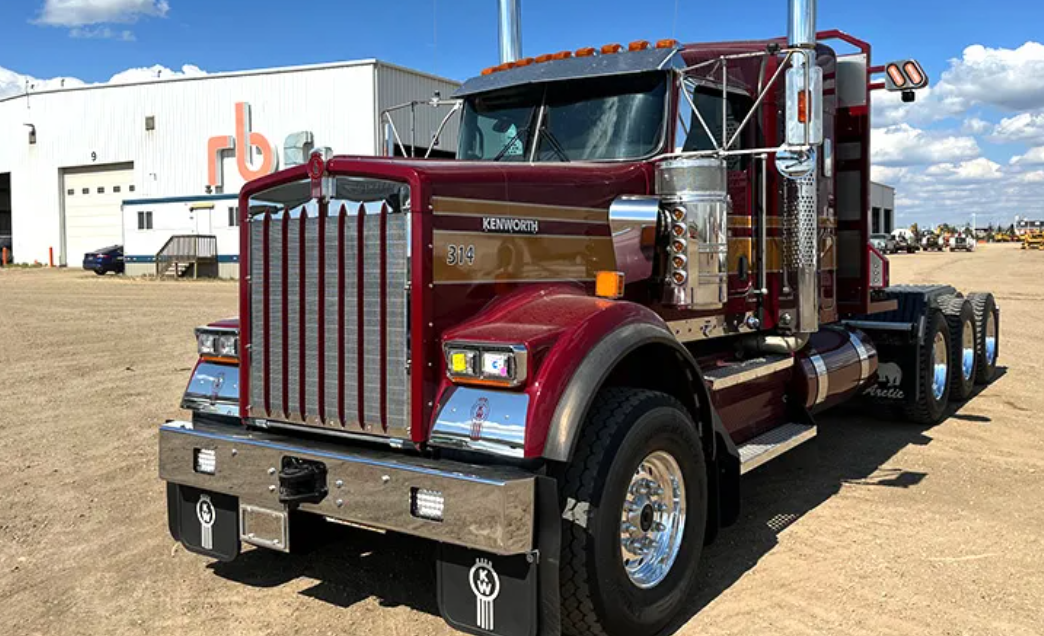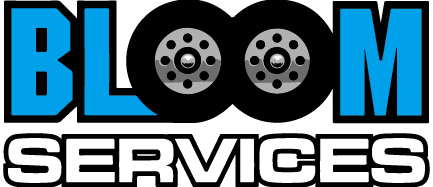Truck and Trailer Tire Maintenance and Repair
Share this Article:
What to Look For and When to Change Them
The Importance of Tire Maintenance
Maintaining your tires enhances vehicle stability and traction, which are crucial for safe handling and braking. Properly inflated and well-inspected tires also support fuel efficiency, as underinflated tires can significantly decrease fuel economy. Neglecting tire issues can lead to blowouts, roadside breakdowns, and even accidents.

Routine Inspections
Visual Checks:
Every day (or at least before long trips), walk around and examine each tire. Look for cuts, bulges, or embedded objects, as these can indicate damage that could lead to leaks or blowouts. Also check for uneven wear patterns that may
signal alignment or suspension issues.
Tread Depth:
The depth of the tread directly affects traction, especially on wet or snowy roads. Use a reliable tread depth gauge to measure it at multiple points around each tire. Commercial truck tires must meet legal minimums (often around 4/32 inch on steer tires and 2/32 inch on drive and trailer tires in the U.S.), but consider replacing them before they reach this threshold to ensure optimal grip.
Inflation Pressure:
Checking tire pressure is critical. Underinflation causes tires to flex more, generating excessive heat that leads to premature wear or blowouts. Overinflation makes the tire too rigid and prone to impact damage. Always adhere to the recommended pressure specified by the tire manufacturer, and factor in your
truck’s load requirements and the conditions under which you’ll be driving.
Valve Stem and Rim Checks:
Leaks often originate at the valve stem or its core. Listen for hissing sounds, use soapy water to spot bubbles, and check for corroded or loose valve caps. Inspect rims for cracks, dents, or rust that could compromise the seal.
Signs of Damage or Excessive Wear
Cracking and Dry Rot:
Rubber naturally degrades over time, leading to cracks on the sidewall or in the tread. If left unchecked, dry rot can weaken the tire structure.
Bulges and Blisters:
A bulge indicates internal damage to the tire’s carcass, often from a severe impact like hitting a pothole or curb. Bulges usually mean the tire is unsafe and must be replaced immediately.
Abnormal Wear Patterns:
- Feathering or Scalloping on the edges can point to improper alignment or worn suspension components.
- Center Wear is typically caused by overinflation.
- Edge Wear can be a result of chronic underinflation.
- Cupping or Dipping often indicates shock or suspension issues.
Tire Repairs
Puncture Assessments:
Small punctures (less than ¼ inch in diameter) that are within the tread area (not in the sidewall) can usually be repaired with a patch-and-plug method. However, any larger cuts, sidewall damage, or holes near the tire’s shoulders often require replacement. It’s essential to have a qualified technician examine damage to ensure a
safe and lasting repair.
Professional vs. Temporary Fixes:
If you’re on the road and discover a leak, a plug or tire sealant might be a temporary option. However, these fixes should only be used in emergencies until you can get a professional patch from inside the tire. This inside-out method is more reliable and safe for continued long-haul use.
Re-Treading:
Many commercial truck tires are designed to be re-treaded, which can be cost-effective. Retreading involves applying new tread on the existing tire casing. Before choosing this route, ensure the casing is in good condition (no severe structural issues or repairs in unsafe areas). A
reputable retread facility will carefully inspect and certify the casing for reuse.
When to Replace Tires
Worn Tread:
Once tread depth reaches the legal minimum or shows signs of excessive wear (like visible cords), it’s time for a replacement. Even if the tire still has some usable tread, consider the operating conditions and distance you need to cover. A tire with borderline tread depth may not safely handle wet or snowy roads.
Structural Damage:
Bulges, sidewall cuts, or exposed cords are immediate reasons to replace a tire. These defects indicate serious internal harm that could lead to a blowout.
Age and Mileage:
Even if the tread appears sufficient, tires degrade from environmental factors such as heat and UV exposure. Most tire manufacturers recommend replacing truck tires every 4–6 years, depending on usage and storage conditions. Keep track of tire age (not just tread wear) and regularly monitor for signs of dry rot or cracking.
Frequent Repairs:
If a tire has been patched multiple times or shows
multiple damage sites, it may no longer be cost-effective or safe to keep repairing it. Excessive repairs weaken the tire’s integrity.
Best Practices for Tire Care
Rotate Tires Regularly:
Rotating tires (especially important for drive and trailer positions) helps even out tread wear. Your rotation schedule will depend on mileage and
manufacturer guidance.
Maintain Proper Inflation:
Invest in a reliable pressure gauge and check tires when they’re “cold” (before driving). If your truck has a tire pressure monitoring system (TPMS), pay attention to alerts and address any abnormalities quickly.
Balance and Align:
Imbalanced wheels or misaligned axles can contribute to uneven tire wear, reduced fuel economy, and vibration issues. Schedule regular alignments and balancing to
extend tire life and enhance ride quality.
Use Quality Tires and Services:
Choosing reputable tire brands and professional servicing can make a big difference in long-term performance. Working with trusted suppliers or service providers ensures high safety standards.
Monitor Loads and Speeds:
Overloading a truck or consistently driving at high speeds accelerates tire wear and increases heat buildup. Stay within manufacturer load and speed ratings to extend tire life.
Final Thoughts on Tire Maintenance
Truck and trailer tire maintenance is a proactive, ongoing process. Routine inspections, proper inflation, and careful attention to wear patterns greatly reduce the risk of problems and promote smoother, safer driving. By identifying damage early, addressing small issues promptly, and knowing when a tire has reached the end of its service life, truckers and fleet operators can maintain an efficient and cost-effective operation. Keeping these vital components in good shape not only improves vehicle performance and safety but also ensures that you can deliver loads on time, wherever the road takes you.
Bloom Services
Here at Bloom Services, we are 100% OTR trucking. While you won’t find us on a virtual billboard in a simulator, we do offer newer trucks, and cover trailer and cargo liability. We do not pay based on mileage, rather we pay 80% gross load. This is beneficial for strong drivers with a decent work ethic, you will earn based on the actual load rather than mere miles. Our drivers average $3,000 plus a week take home pay after all expenses, like fuel, truck rent, etc. If you have Grit, and the endurance to consistently deliver loads and run for at least three weeks at a time, you can take home $150K a year. If you are interested, apply now.



